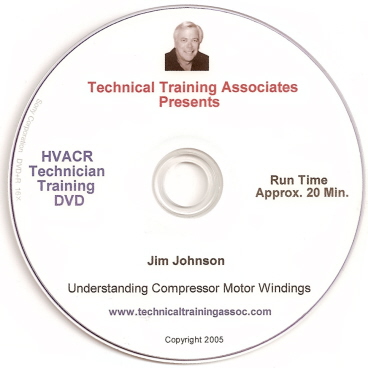
Here is an example of a PSC design that is more efficient than a previous design, and uses about 14 percent few amps. If the two motors were compared just based on amps, it might be incorrectly concluded that the previous design was a stronger motor, which is not the case.
Take nameplate amps, for example. It is common practice to determine the power input of two motors by comparing nameplate amps of the original motor with those of the replacement. In other words, if the replacement motor's rated amps are at least as high as the original, you are reasonably safe in using it in the application. This practice works best when you're working with motor types whose efficiency varies little from one design to another. A good example would be three-phase motors.
But, the nameplate may not tell the entire story, and as a superior service technician, you need to be aware of the chapters that are missing. Motor nameplates typically do not include input watts as a power measurement, nor do they identify the motor's efficiency. In certain applications, these criteria may be critical factors in deciding if a replacement motor can do the job.
One case where the nameplate amp comparison often breaks down is when you're working with single-phase motors. These motors, which include permanent split capacitor motors, shaded pole motors, as well as split phase and capacitor-start versions, may vary widely in terms of efficiency within a single motor design. You have no way of knowing that, however, simply by looking at the nameplate.
So what happens to the nameplate amp comparison in this instance? Since nameplate amps reflect total current consumption of the motor (including current converted to output power and current lost to heat), higher nameplate amps on a single-phase motor can just as likely indicate poorer conversion efficiency as increased power output.
Faced with this challenge, the service technician dealing with single-phase motors needs to look beyond amps and compare the horsepower of the replacement motor to the original. If nameplate amps and horsepower compare favorably, you likely will have a suitable replacement.
To be certain, however, it's important that you test the replacement motor in the application itself. This is especially true when you remember that there is not a single industry standard for motor efficiency. Best practice is to measure the amps through the motor terminal or power leads of the replacement and compare that reading with the amp rating shown on the replacement motor's nameplate. When you perform this test, make absolutely sure that the motor is in its normal operating state with all belts, blowers, baffles, and enclosures in place. If you do not duplicate the motor's normal working environment, you will not get a true reading of the motor's total current consumption. You very possibly will end up with an overloaded condition and eventually an unhappy customer.
Motor manufacturers are becoming increasingly sensitive to motor efficiency and are working to design motors that deliver higher power while consuming the same or fewer watts. All of this product development means that you, as a service technician, will probably see motors in the field of similar power output but with significantly different ampacity. By being aware of these differences and understanding that you won't find this important information just by looking at the nameplate, you will be able to provide correct replacements - and better service - to your customers.
Publication date:03/05/2007






